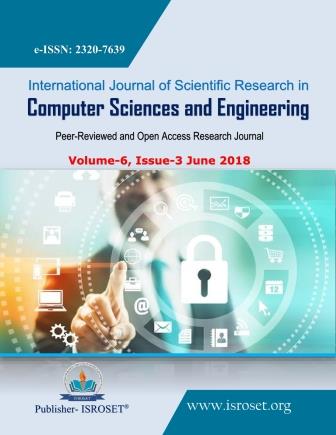Handwriting Recognition System Using Optical Character Recognition
Keywords:
OCR, Language ModelAbstract
This is an overview of the most recent published approaches to solving the handwriting recognition problem. This paper is aimed at clarifying the role of handwriting recognition in accordance with today`s maturing technologies. It tries to list and clarify the components that build handwriting recognition and related technologies such as OCR (Optical Character Recognition) and Signature Verification. This paper could also be regarded as a survey of handwriting recognition and related topics with a rich list of references for the interested reader. A level of practicality of use of this technology for different languages and cultures is also discussed.
References
Bhatia Neetu, “Optical Character Recognition Techniques”, International Conference of Advanced Research in Computer Science and Software Engineering, Volume 4, Issue 5, May 2014.
Goutam Sarker, Monica Besra, Silpi Dhua. (2015) A Malsburg learning back propagation combination for handwritten alpha numeral recognition. 2015 International Conference on Advances in Computer Engineering and Applications, 493-498
Fahim Irfan Alam, Bithi Banik. (2013) Offline isolated bangla handwritten character recognition using spatial relationships. 2013 International Conference on Informatics, Electronics and Vision (ICIEV), 1-6.
Amjad Rehman, Tanzila Saba. (2012) Off-line cursive script recognition: current advances, comparisons and remaining problems. Artificial Intelligence Review.
A.K.Gupta, S.Gupta Research Paper | Isroset-Journal (IJSRCSE) Vol.6 , Issue.2 , pp.38-40, Apr-2018, CrossRef-DOI:https://doi.org/10.26438/ijsrcse/v6i2.3840, Neural Network through face recognition.
Haralick R. M.; Shanmugam K.; Dinstein I. (1973): Textural Features for Image Classification, IEEE Transactions on Systems, Man, and Cybernetics, 3(6), pp. 610–621.
Clausi D. A. (2002): An analysis of co-occurrence texture statistics as a function of grey-level quantization, Canadian Journal of Remote Sensing, 28(1), pp. 45-62.
Downloads
Published
How to Cite
Issue
Section
License

This work is licensed under a Creative Commons Attribution 4.0 International License.
Authors contributing to this journal agree to publish their articles under the Creative Commons Attribution 4.0 International License, allowing third parties to share their work (copy, distribute, transmit) and to adapt it, under the condition that the authors are given credit and that in the event of reuse or distribution, the terms of this license are made clear.







